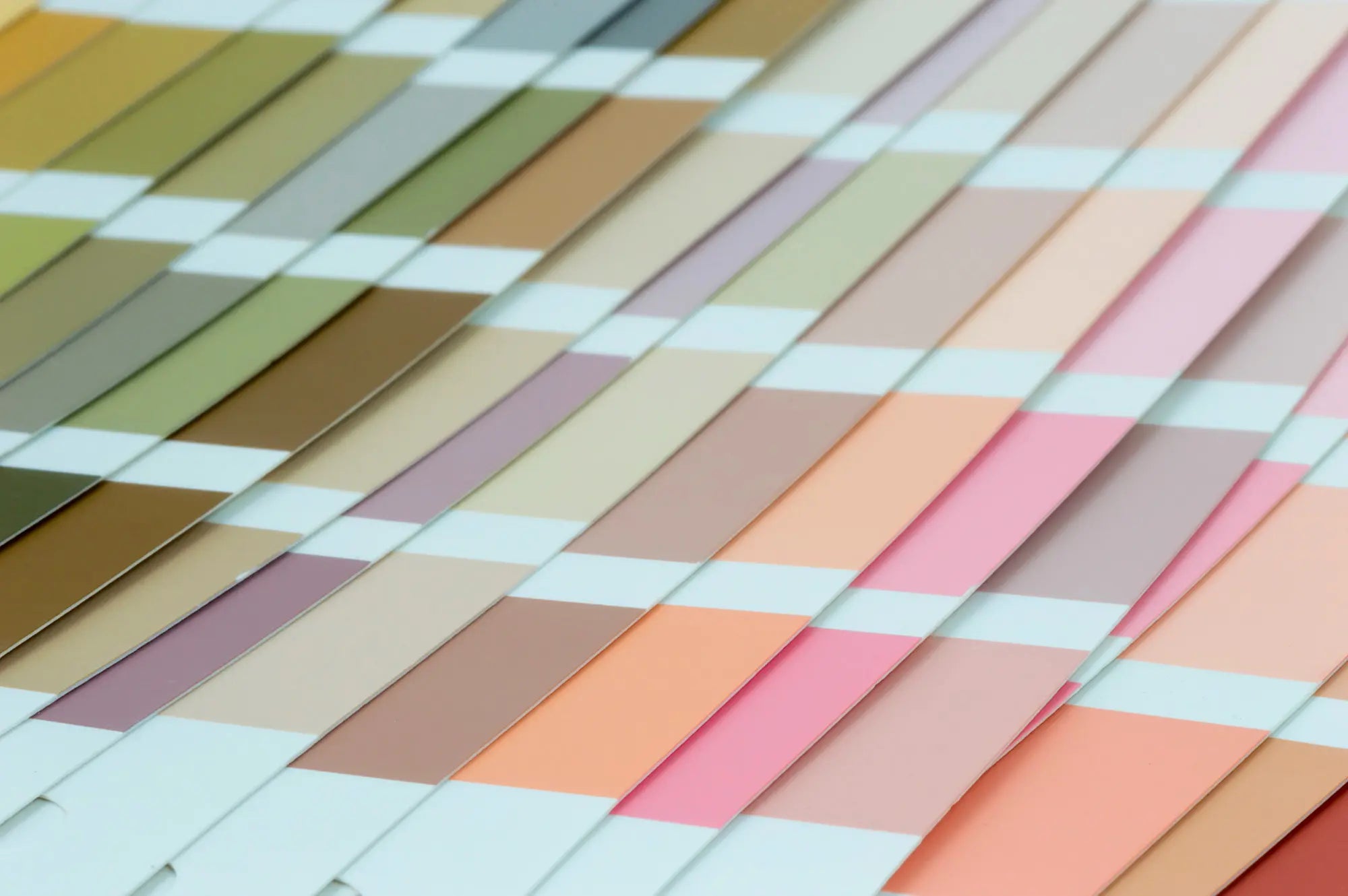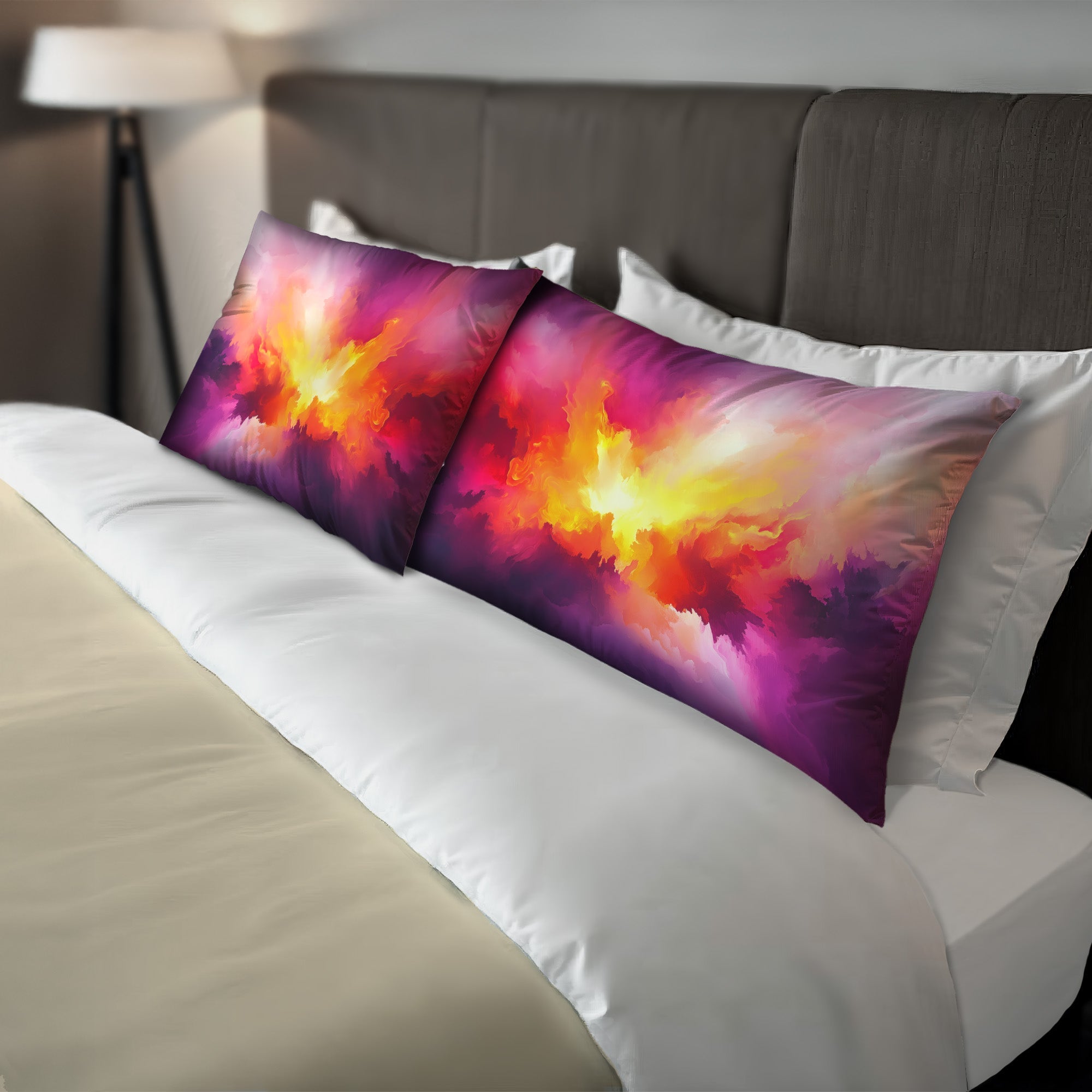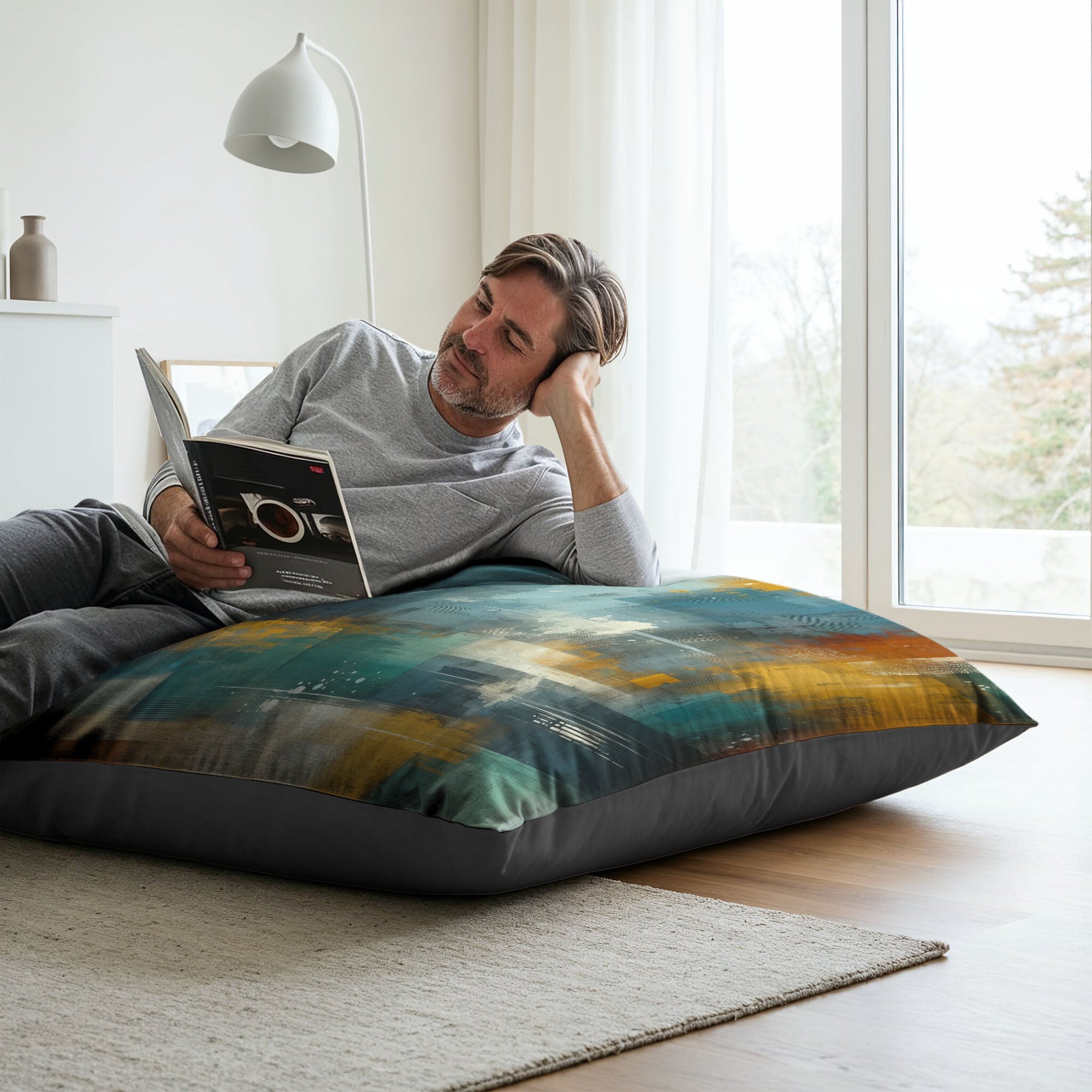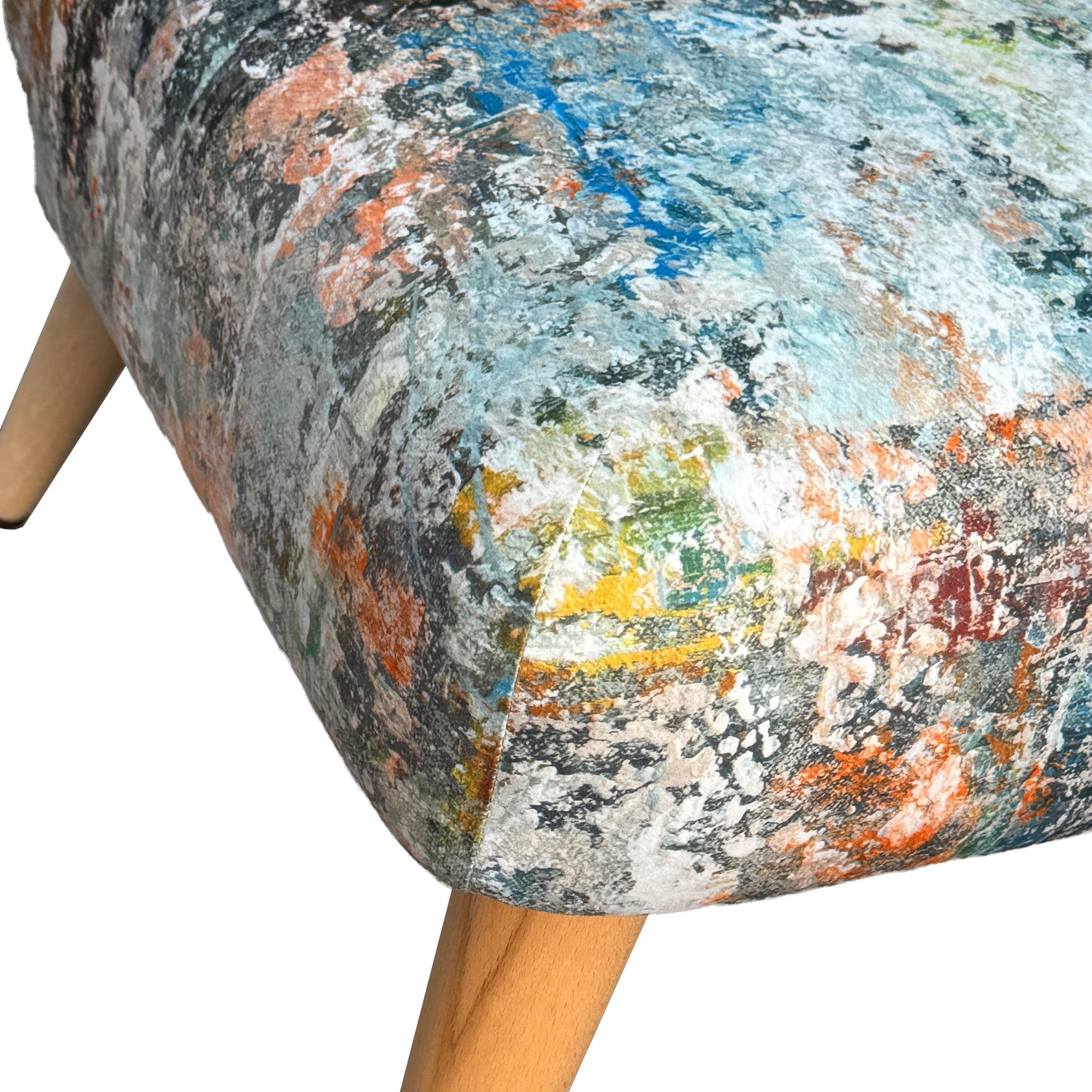Colour has always been more than decoration. Often without us even realising it, colour shapes how we feel, think, and even behave, and few people understand that better than Sara Fernández, a colour specialist and interior designer with more than 25 years' experience.
Sara's work explores the emotional side of living with colour, who after years creating domestic and commercial spaces that balanced mood and function, now uses that vast knowledge and experience to teach students. Sara has also turned her creative eye to painting abstract art.
In this conversation, we talk about the psychology of colour, the myths that surround it, and how the right palette can completely change the atmosphere of a room, or a person.
Let’s start with your journey.
How did your path into interior design begin, and what or who influenced you most in those early years? Looking back, do you think your fascination with colour was there from the start, or did it develop as your design career evolved?
Sara:
I have always loved art and colour since I was a child, I just loved to organise my room and paint. I lived for my Art classes at school. I wanted to go to Art College but back in the 80’s I was very naive and I just thought if I go to art college I'll just come out with an art degree, then what, so instead I did a secretarial course and went into that line of work.
I was very very fortunate, I worked for a building refurbishment company in the E2 and loved the work that the company did. I was the secretary and was involved in the day to day running and organisation of the builders, and my boss took me around some of the lovely projects that we refurbished in Knightsbridge and Kensington. I grew bored though, I knew I wanted to do more and thought I would go abroad and do something else instead. My boss was very encouraging and asked me what I would like to do and I said that I always remembered my cousin's neighbour was an interior designer, the house was always lovely and that really appealed to me. He said ok find out about it.
The deal was that I would find a course as long as his son could go too. (He is the same age as me). So we found The American College in London (as it was called then) and embarked on a 3 year interior design degree. I used to go to work before or after college if I was needed, I used to ring him every lunch time from a phone box to check in. It was a fun time, hard work, but I was extremely grateful for his generosity in paying for my degree.
Colour theory was one of the subjects that I undertook which I really loved, although at that time I didn't really learn anything about the psychology of colour until years later when I enrolled on an interior design colour theory diploma course, which opened my eyes. I always knew colour really affected me, but now I understood why and I have been fascinated ever since.
You’ve spent more than 30 years helping people create spaces that feel right for them.
What have you learned about how people respond to colour emotionally? Are there patterns or surprises that still catch you off guard after all this time?
Sara:
I think the thing I have learnt over the years is that people are scared of colour. They are afraid to be brave. I have also discovered over the 30 years of teaching, that when people explained what colours they had in their rooms growing up, it really made me understand how colour was telling a story of their emotions. For example, there are colour patterns that we as humans are drawn to as we are babies, children, teenagers, adults and mature adults, and it is normally quite predictable, so when I hear that as a child they had their room in black, or purple, then this is not the norm and therefore there is more to it, perhaps their parents were going through a divorce, or bereavement or they were struggling mentally.
I have used colour to help people emotionally, for example a client's wife died, very young, it was tragic. He contacted me and wanted me to help him design an outside retreat for him and his boys to relax, bring friends and basically use it as a social place. We added a kitchen and toilet to the space. We used orange on one wall. I know that I know what I am talking about, but to this day I am still amazed how much this room is used, it has been such a success for the family. It is used all year round. They needed that colour, it is a colour of creativity and social interaction and for healing. So an absolute perfect colour.
The same client also had an outside gym constructed and asked me to design the colour scheme, I just remember him painting the room and ringing me saying it looks ‘American Tan’ even his boys weren't convinced, they couldn't see the end result, but only what was at the end of the paint brush! We then used black, which brought everything together, very well.
Nothing really catches me off guard, I think about the space for the client so much and I visualise it and I know that it will be the right colour for them. It just depends on whether the client trusts me enough to be brave!!!!
Many people think of colour psychology as a set of rules - blue is calming, red is stimulating, yellow is cheerful.
In your experience, is that too simplistic? How do you balance those general principles with the personal reactions clients often have to certain tones or combinations?
Sara:
It is good to have a simplistic set of rules, however, blue is cold, red is warm, and every colour will have a warm, cool or neutral undertone to it. There are so many variations of colour it is amazing, and remember, that everyone sees colour in a different way, it is not wrong or right, it's just different. Some people have a very sharp interpretation of colour and some people have colour blindness. So it's how the colours work together in harmony that makes it work for the individual or not.
If you are designing for two people, you have to be mindful of what their individuals like. Otherwise, if you don't, one person will get the benefit of that colour and the other will not. So for example, if a client wants a warm neutral tone in their room, it is finding a common ground that they both feel happy with.
You’ve transitioned from interior design into teaching and creating abstract art.
What led to that change, and how has your relationship with colour shifted now that you’re using it on canvas instead of walls? Do you approach colour intuitively when painting, or does the designer’s analytical side still guide you?
Sara:
OMG - I just love design, I also love challenges, in fact before I was teaching interior design I was teaching painting techniques, mixing colour and creating textures, which I absolutely loved. Painting techniques were popular and I used to work in restaurants, pubs, clubs and residential houses creating marbling techniques, Verdigris, Lapis Lazuli to name but a few.
The teaching came about, through an advert I saw. The deal was if the subject was popular, then they would pay for your course. So this developed I was asked if I knew of any interior designers and I said ‘me’. Because of the popularity of a new program called Changing Rooms, Interior design became something anyone could do, not just the elite. So the teaching training began. I wrote courses, from 1 day workshops, 2 weeks, 1 year, 2 years all sorts. I have also written courses for international companies and my courses are sold across the world.
Over the years I have always painted as a hobby. More recently, I have found that I love the technique side of creating, so abstract is more appealing to me. In fact I think that I am going back to my painting techniques roots, because I love seeing how colour, pattern and texture work together. I don't know whether I will sell my work, or whether I will just do it for pleasure - who knows.
When you’re working with clients, students, or even painting for yourself, how do you help people overcome their fear of getting colour “wrong”?
Do you believe everyone has an innate sense of colour confidence, or is it something that can be learned?
Sara:
When I am working with clients, students or myself. When working in interior design I have a vision in my head of how that is going to look. However, when I am painting, that doesn't always go to plan, because you put the paint down and then you don't like it or you overwork it.
The great thing is that you can paint over and start again or build it up. When working with clients or students, I always suggest putting samples together and creating a sample board, so they can see how the colours work together - for example, ceiling colour, wall colour, flooring, furniture and accessories - this cuts out the mistakes. If they have painted, then you can always paint over it, that is the beauty of paint.
Colour is so personal, and that is why it is so amazing, we all have a reaction to colour good or bad, they can bring back memories that we either loved or hated and then we associate that memory with that colour. I don't particularly like cold colours, I am very reactive and feel the colour when I enter a room. However, because we all see colour in a different way some people perhaps don't notice the colour so much. You can learn to understand colour, however, you cannot learn to see colour in any other way than you see it.
The term “dopamine décor” has become quite a buzzword lately — interiors full of bright, mood-boosting colour.
Do you see that as a positive movement, or more of a marketing trend? Can colour genuinely influence happiness in a lasting way, or does it depend on deeper emotional context?
Sara:
I am not a fan. To me, mixing all different colours, and different styles together is over stimulating, your mind can't switch off. If you are designing a relaxing bedroom or sitting room, this type of design will not give you the right feeling.
However, if you want an active space, which ignites ideas and stimulates the mind, this would be a good type of style, but not for long periods of time. You will eventually become agitated and will not be able to relax. For someone that is anxious, this would not be an advisable decor.
You’ve talked before about the importance of balance — not just in tone, but in how colour interacts with light and texture.
What are some of the most common mistakes people make when using colour in their homes, and how would you encourage them to think differently?
Sara:
Balance in a room is so important, but also getting the right tone. Think about which way your room faces, for example, north facing rooms will feel cold, I often see people that paint their north facing room in a blue or other cool colour and they say, we never use this room because it doesn't feel comfortable. It is because the colour needs balance, a warm balance to counteract the coolness, equally if you painted a south facing room in red or another warm colour, it would become overbearing.
The same for small rooms, if you paint a small room in a deep warm colour, you will feel that the walls are coming in on you. So knowing the direction of the room and what you want the room to do for you is so important. Think about how light or dark a room is and consider colours that will counteract it.
The things I tell my clients:
- Which way is the room facing?
- Do you use the room during the day or evening and how often?
- What do you use the room for
- What is the most important piece in the room - curtains, sofa, artwork and use colours that will harmonise or contrast with that piece. Use that piece as your starting point
Not everyone can visualise what a colour is going to do for a room, normally people are governed by fashion, what they like or what they are comfortable with, but by doing a bit of research they can pick the right colour and have a room that creates an emotional and harmonious feeling for all.
Finally, if you had to describe the emotional power of colour in one sentence, what would it be?
And if you could only live surrounded by one palette for the rest of your life, which would you choose, and why?
Sara:
‘There is no life without colour’
I love greens and earthy tones. I love nature, it makes me feel safe and grounded.

















